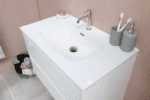Many of the exposures for community associations beyond property damage involve safety and security issues. From premises liability claims, such as slips and falls on the heels of a snowstorm and pool and playground-related injuries, to negligent security incidents, community associations and their boards can find themselves responsible if it’s determined they failed to meet their obligation to prevent harm.
Juries in jurisdictions throughout the country have found liability in cases where associations have failed to take reasonable steps to prevent foreseeable injuries, such as a slip-and-fall incident resulting from the physical condition of the property. In several cases, condo and homeowner associations have been found liable for third-party criminal acts that took place on their property.
The safety policies and procedures that community associations employ will help mitigate potential losses. Let’s take a look at some of what your insureds should be doing to help keep their residents safe.
Premises Safety & Maintenance
The most important factors for community associations in establishing property safety and maintenance procedures are consistency, follow-through and documentation of all corrective actions taken. Be sure the property manager performs frequent walk-throughs of the community using a routine checklist that covers the following:
- Conducting regular inspections of the premises,
including lighting, doors, interior railings, elevators, walkways, etc., to
determine if repairs need to be made or additional precautions must be taken.
For example:
- Do the entryways close completely or is the mechanism malfunctioning?
- Do the elevator doors open and close properly?
- Conducting a maintenance check of all balconies, including the strength the railings, the distance between each rail, and load capacity. If someone falls and is injured because of a damaged balcony, the association will be sued.
- Inspecting the pool and determining what safety
precautions are in place:
- Are there any gaps in the fencing around the pool?
- Is the pool latch functioning?
- Is the pool area kept locked during no-use hours?
- Are walking surfaces in the swim area slip-resistant and level?
- Is life-saving equipment readily available in the area?
- Conducting a comprehensive playground safety audit of each site and each piece of equipment.
- Reviewing sidewalk conditions. If the property is in a region where winter brings snow and ice, hire a vendor for snow removal. Ensure the terms in the vendor contract are clear, outlining the vendor’s obligation, timing for snow removal and de-icing, frequency of work performed, etc. Ask for a written record of the vendor’s work.
- Inspecting the parking lot. Ensure the lighting in the parking lot is sufficient; check the parking lot for potholes after the winter season.
- Having an arborist prune trees regularly, including looking for lifted roots and dead branches that could potentially injure someone.
Premises Security
It’s important to remember that there isn’t a one-size-fits-all approach when it comes to security. Each community’s risks are different depending on its location. The potential dangers present in the big city will obviously differ from those faced in more suburban associations.
Make sure the association reviews its governing documents to determine if it has a duty to protect residents or provide security. Remember, once an association starts providing security, it takes on the obligation to provide such security in a good and reasonable manner. Failure to do so exposes the association to liability.
A community association may also be held liable for negligent security if criminal activity by a third party occurred as a result of a condition on the property such as broken common door locks, non-functioning buzzer entry systems, holes in fences, and burned-out lighting.
Hiring a Professional to Identify Risk
The board should hire a professional to conduct a walk-through of the property and identify its primary risk and any security lapses and concerns that require attention. If, for example, the board is concerned about vandalism and graffiti by teenage kids in the neighborhood, one solution may be as simple as stepping up the lighting by the pool, playground, storage facilities and other areas. Motion-sensor lights are a good deterrent.
If an association sees an uptick in break-ins in the area and phone calls made to the police – even for minor incidents – these types of issues should be addressed proactively as this could create a security liability if something more serious occurs such as an assault. A plaintiff’s attorney could allege that the association knew there was an unsafe condition and was negligent in securing the premises.
Installing Video Surveillance
Should a professional recommend installing video surveillance, the community association should be aware that doing so carries its own set of risks. The board should be clear as to where its responsibility lies when it comes to surveillance and responses to perceived threats to help it exercise caution to avert overstepping its administrative authority. While statutes vary from state to state, every association’s governing documents should contain guidelines as to what is required, what is permitted, and what is prohibited in terms of security measures.
When installing video surveillance, the association must take certain factors into consideration: camera locations, video monitoring and frequency, video retention, etc. A resident robbed at knifepoint in the parking lot will have a potential claim if it turns out that the surveillance camera located there has been broken for six months and the board has ignored multiple requests to repair it. Also, if the association has an obligation to retain the footage but doesn’t retain it properly, it is creating potential liability for itself. It’s imperative for the association to follow its documented procedures for retaining surveillance video.
Reviewing Insurance Policy
In addition to having safety procedures in place and periodically assessing measures to keep residents and property as safe as possible, a community association should also review its insurance program to ensure it properly addresses its risks. This includes reviewing the limits on the association’s General Liability and Umbrella Liability policies. In the event of a catastrophic incident, having a sufficient amount of coverage is critical in responding to a lawsuit.
Distinguished’s Community Association Program offers a high-limit Umbrella policy with several key features including Crisis Response coverage.





